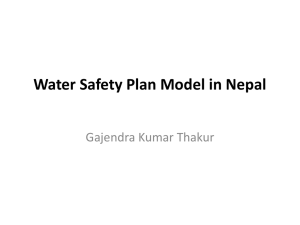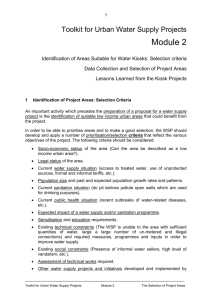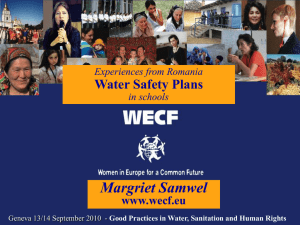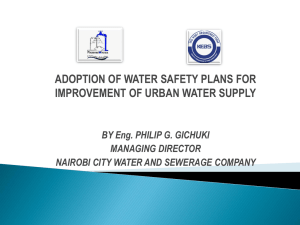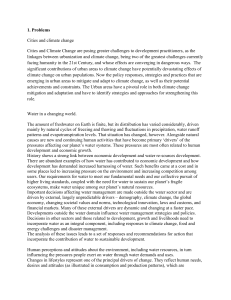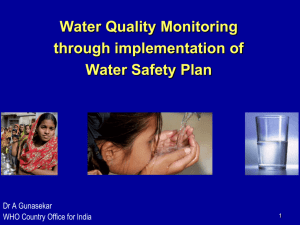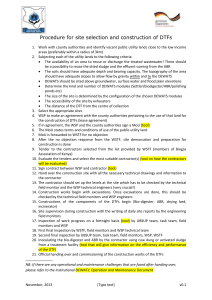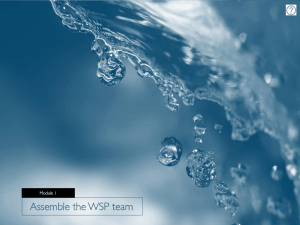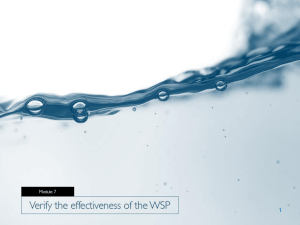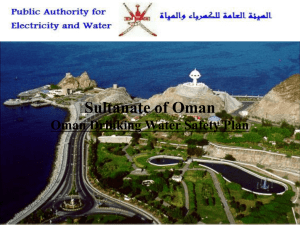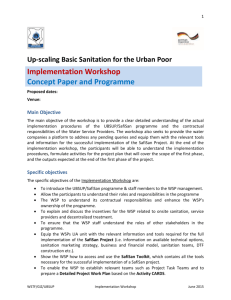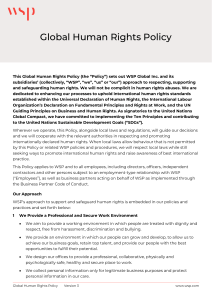WSPs at small-scale and community level
advertisement
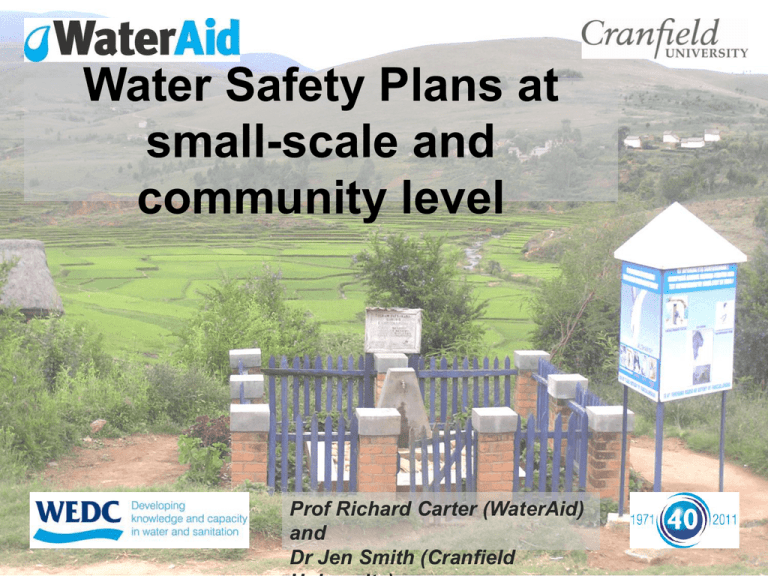
Water Safety Plans at small-scale and community level Prof Richard Carter (WaterAid) and Dr Jen Smith (Cranfield Overview • The need for Water Safety Plans • WHO / IWA WSP steps • WSP in small-scale / community managed systems • Liberia (no WSP) community handpump • Nigeria (no WSP) urban dug wells • Bangladesh findings from WSP pilot project • WSP critique • The future – ‘Water Security’ The need for Water Safety Plans • Health • WASH related illnesses e.g. diarrhoea • Unreliable and unavailable • Results are too late • Requires resources & expertise WSP steps WSP in context Liberia – community handpumps • Functioning water committee • Active community health volunteers • Best practice followed Nigeria – urban self supply • • • • • • Variable well conditions 1 owner, many users Limited space (toilet & well) Poor health understanding Little governmental support Reactive culture Bangladesh – WSP pilot study • Improved microbial quality: – at tap – in home – Not 0 CFU/100ml • Significant & consistent reductions in sanitary risks • Simple monitoring tool (pictorial) • On-going surveillance • Further capacity building (local & regional) APSU, 2006 WSP for small self-supply and communitymanaged systems • • • • • • • What do users care about in terms of water? Importance of external support Buy-in from all parties How do you regulate / monitor / verify? Template use – links with complacency? Success of localised revisions Culture – recording data / proactive approach Beyond water safety plans (1) Water consumers want: – ready access – adequate quantity – adequate quality – acceptable reliability – at a price they can afford – without an unrealistic management burden Beyond water safety plans (2) Why consumers want – ready access: convenience, time and energy saving – adequate quantity: for domestic and productive uses – adequate quality: for aesthetic reasons, health – acceptable reliability: convenience and time saving – at a price they can afford: poverty, valuation of water – without an unrealistic management burden: convenience Outcomes and impacts of improved water supply Outcomes: Increased consumption of adequate quality water from a reliable, affordable and manageable system - in other words, functioning and utilisation (WHO MEP) of a sustainable service (WaterAid, Triple-S and others). Impacts: Time and energy saving leading to socio-economic impacts. Enhanced quantity and quality leading to (small) health impacts. Beyond water safety plans (3) Not only water quality (safety) for health ... but a fully functioning water supply service in order to achieve the wider outcomes and impacts which consumers want. ... towards water security Water security has environmental and management dimensions • Environmental aspects: quality and quantity of water resources, pressures, trends • Management aspects: financing and institutional arrangements to ensure functional sustainability Towards ‘water security’ plans Combining the principles of integrated water resource management - High-level - Poorly defined - Hard to implement + Common sense + Integrated with the practicality of water safety plans + Practical + Simple + Risk-based + Achievable - Limited focus Moving towards a risk-based approach for ensuring sustainable water supply services j.a.smith@cranfield.ac.uk richardcarter@wateraid.org
